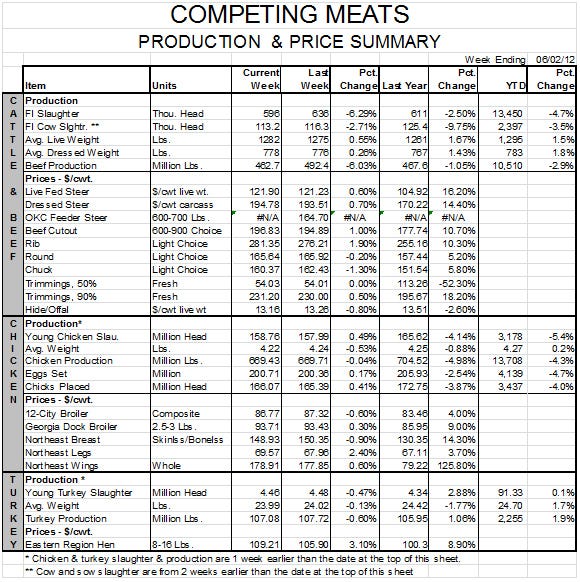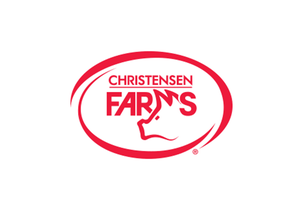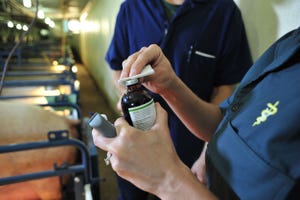June 4, 2012

The deadline for comments on USDA’s proposed rule establishing the mandatory price reporting (MPR) system for wholesale pork cuts was May 22. The National Pork Producers Council, American Meat Institute and many others filed comments on the rule but none, to my knowledge, were contentious.
One reason was the process that was used to write the proposed rule. “Negotiated rulemaking” brings the parties that will be impacted by the rule to the table to write the original proposed rule. From what I could gather, USDA had used the process once before and, based on comments from USDA before this one started, were none too happy to have to use it here. But the legislation establishing the wholesale pork MPR system specified negotiated rulemaking and it turned out great. There were differences, negotiation and compromises along the way, but the people who did the negotiating were knowledgeable and good at fleshing out the issues before the proposed rule was published. As a result, the comments were positive and supportive, even when they addressed shortcomings. Kudos to industry representatives and USDA personnel who got this job done so efficiently.
One motivator for wholesale pork MPR is the need for more and broader knowledge about the wholesale value of pork carcasses. Historically, only a small fraction of the wholesale pork cuts sold each day have been reported under the voluntary price reporting system. That leads to estimated cutout values that are based on prices that come from markets even more thinly reported than is the negotiated hog market, which, itself, has gotten thinner and thinner (See Figure 1). In fact, the percentages of hogs negotiated each week hit a new low the week of May 4 at 2.51%.

Does this mean the price that week was too low? Not necessarily. Too high? Same answer. The negotiated price for that week was a disappointing $81.33/cwt., carcass, but I ascribe little of that disappointment to the percent of hogs whose price was negotiated. Slaughter numbers and weights, thus output, were far more culpable in that low price.
But it does mean that a mismatch between the number of hogs offered through negotiations and the number needed through negotiations is more likely. Throw an extra 10 loads into the market in 2005, when 10% were being negotiated, and it would not have made much difference. The same 10 loads today would allow prices to fall sharply. And the reverse holds true if packers need 10 more loads. The situation is built for volatility.
An alternative may be needed and many think the cutout value is a good candidate. I will agree with that view once the wholesale pork MPR system is up and running. We will not get near all the cutout volumes reported since many bellies, hams, picnics, etc., stay in house for processing and thus, never have a wholesale market price attached to them. But we will almost certainly get more prices on more products. I can see no way that the cutout value does not become more dependable.
Don’t get in too much of a hurry, though. USDA will publish a final rule later this year. My guess is it will be this fall before we see it. The industry will then have 6-12 months to get the necessary programming done to report the vast volume of data to USDA. We won’t actually see data until late 2013 or, perhaps, early 2014.
What can be done about the dwindling negotiated numbers that set the value for at least another 40% of the hogs? Not much, other than producers deciding to engage in the process more. The truth is that negotiating the price of each load of hogs or even a group of loads of hogs on a daily or weekly basis is time consuming and, thus, expensive. Then add the fact that many producers’ experiences with “negotiating” prices was to take them to an auction or deliver them to a buying station after calling to see who is offering the most. Neither option is in fact negotiating. Few producers have either the skills or the personality to dicker effectively over price. When people are generally uncomfortable with a costly process, they quite logically avoid it.
So where does that leave formula pricers who negotiate the prices of no hogs? Probably where they deserve to be since they are free riders who use the information generated by others and avoid the cost of generating it themselves. The only way to fix this is to make formula pricers pay for the information they use, reward negotiators for generating the information, or some combination of both. Or, let a third party do it. Lucky for us that packers and retailers finally decided that they need more information about wholesale cut prices!
Condolences to the Pearson Family
I can’t close this column without sending condolences to the many friends of Mark Pearson, the farm director at WHO radio in Des Moines and host of Iowa Public Television’s Market-to-Market. Mark died suddenly Sunday afternoon. I was not a close friend, but I enjoyed him greatly whenever we were together and, especially, on the few occasions we worked together. Most of us in the Midwest simply felt a kinship with Mark. He did our business proud, bringing knowledge of agriculture and agricultural markets to millions of city folk each week through public television stations that aired Market-to-Market. We will all miss him. As Mark did when Gary Wergen passed on a few years back, who will step up to carry on?


About the Author(s)
You May Also Like




